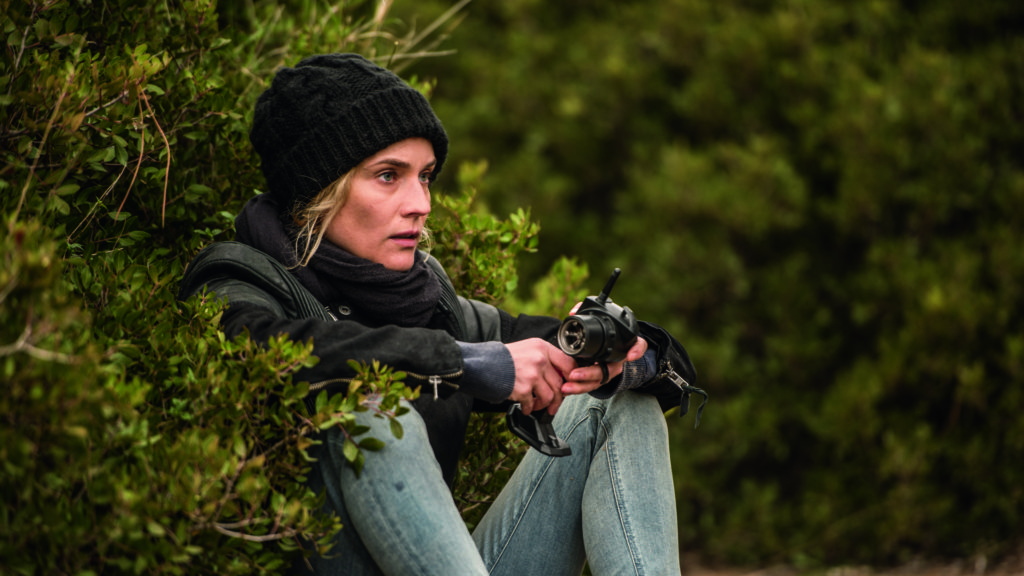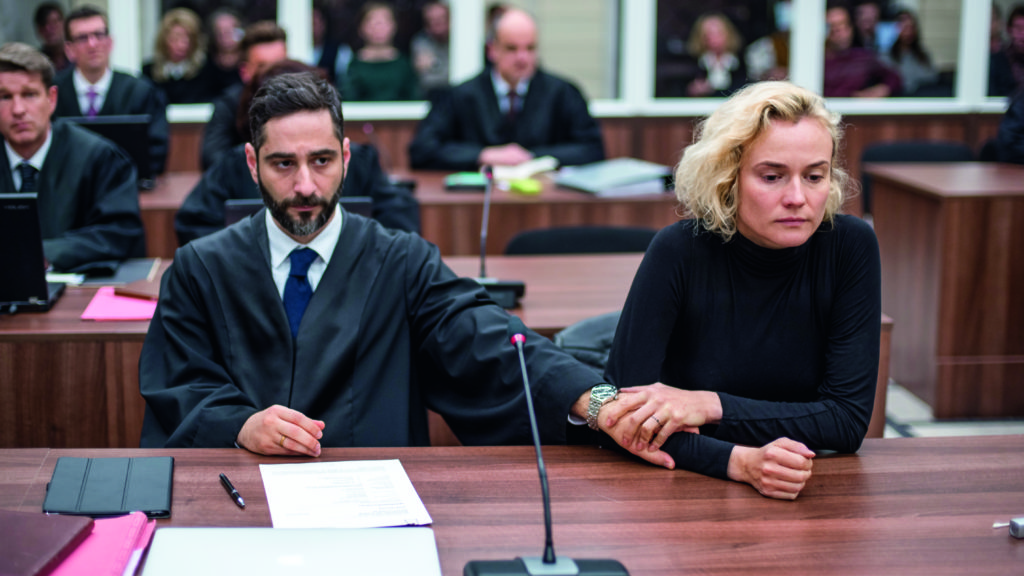
Diane Kruger gives a brilliant performance in the searing and emotionally devastating German thriller In the Fade. Kruger plays a German woman whose husband and child are murdered. Her life essentially disintegrates, as a whodunit carries on mostly beyond her. Katja is not exactly the German Betty Crocker. She’s tatted up and has married a Turkish Kurdish man who is a reformed drug dealer. But her grief is universal, and so is her impulse for revenge. Her husband’s attorney Danilo (Denis Moschitto) leads her on a quest for justice. But she must decide whether to take justice into her own hands. And how. And at what cost. The final scene in In the Fade is unforgettable.
German writer-director Fatih Akin, like Katja’s husband, is the son of Turkish immigrants. In In the Fade’s taut one hour, 46 minutes, he has crafted a pulsating page-turner. It can’t be easy to keep the pace of a movie from grinding down when the protagonist is plunging into a puddle of grief, but Akin pulls it off. The horror of the murder is not shown on-screen, but Akin funds a way to make it even more horrible than if we had watched it happen. Akin has made a successful thriller here, not a “message movie”, but he also effectively addresses the topical issues of immigration, racism and terrorism.

Diane Kruger won Best Actress at last year’s Cannes film festival for this performance. She creates a fundamentally vibrant Katja, who must react to a horrific loss, and then to a series of indignities capped by brutal gut-punch from her mother-in-law. This is a profoundly authentic depiction of grief. When any chance for resolution is jerked away from Katja by a shocking injustice, Kruger takes Katja into steely resolve.
Kruger is an impressively versatile actress. She’s equally good as an American detective with Asberger’s in the absorbing American miniseries The Bridge and as a whim-driven queen in the French costume drama Farewell, My Queen.

In the Fade is filled with excellent performances. Besides Moschitto, I’ll point out
- Johannes Krisch as cinema’s most despicable defense attorney, loathsome down to the prefunctory danke with which he ends each argument.
- Hening Peker as the earnest-to-a-fault police investigator, doing everything rationally and by the book, but not in a way comfortable for our sympathetic victim, Katja.
- Ulrich Tukur as a character who has found serenity in doing the right thing, difficult as it may have been.
In the Fade won a Golden Globe for Best Foreign language Picture last Sunday and
opens this weekend in San Francisco.
